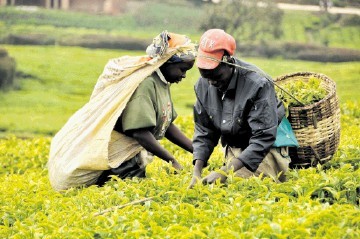
Discoveries of major gas reserves offshore Tanzania have shed a spotlight on how well the country’s infrastructure will be able to cope with increased trade.
Tanzania’s infrastructural deficits are well-known and while recent improvements are welcome, high transport costs, inadequate infrastructure and excessive bureaucracy remain serious obstacles.
Dar es Salaam port manages 95% of the country’s international trade. The introduction of inland container depots (ICDs) has improved the efficiency and eased congestion at the port, but has increased transit costs.
The World Bank estimates total time to export at the port is four days and $320 per container, while imports take 10 days and $540 per container.
Dwell time is approximately 13 days, ship waiting about 3.8 days and ship turnaround 6.7 days. These figures mark considerable progress from previous years, but can still be improved.
Handling and customs inspector fees at Dar es Salaam have risen to $70 handling and $100 custom inspectors fees per Twenty-foot Equivalent Unit (TEU), which is the standard measure of container capacity.
Total capacity has increased from 11,000 to 23,000 TEUs but the port still struggles to manage cargo. Indeed the Port Improvement Committee estimates that 10 containers are moved per hour, well below the international standard of 25 containers per hour.
Rail freight is available, but a slow and unreliable option. Instead, roads carry most freight from the port.
Urban traffic can affect the road 15-20 km from the port, and city congestion is a major concern.
In order to protect roads from over usage, the number of axles allowed on regional roads is now three. The gross weight permitted per truck is 48 tons, and trucks have to be weighed at each weighbridge.
Excessive bureaucracy inhibits efficient transport. On a single trip, a truck driver is on average stopped twice by traffic police, three times at weighbridges, once at a traffic police checkpoint and four times at the Tanzania Revenue Authority.
Road standards have improved in recent years; the World Bank now estimates that 75% are in a fair condition, and Tanzania’s road infrastructure compares favourably to its neighbours, although some routes can be severely affected by flooding.
But safety remains a further, often ignored, risk; Tanzania suffers from the highest road accident rate in the East African Community.
Infrastructure concerns have attracted significant attention, and the government has earmarked a TZ$13.52trillion (US$8.6billion) budget for infrastructure investment, including a new deepwater port at Mwambani Bay.
There is limited space for further expansion at Dar es Salaam. A new port may help to overcome its capacity constraints, but funding will be an issue, particularly as it risks being overshadowed by Kenya’s Lamu port project.
Improved efficiency will be vital in increasing capacity up to a point, but may be overwhelmed by increased traffic. Significant further investment in ports and road infrastructure will be needed to facilitate trade and the growth of the gas sector.
Hannah Waddilove is an intelligence analyst and Sarah Collier is a research assistant, both specialising in Sub-Saharan Africa at security specialist AKE
AKE and the Africa Business Centre are holding Lunch & Learns on May 2 and 22 focussing on Piracy & Libya respectively – for further information contact Claire.fleming@akegroup.com